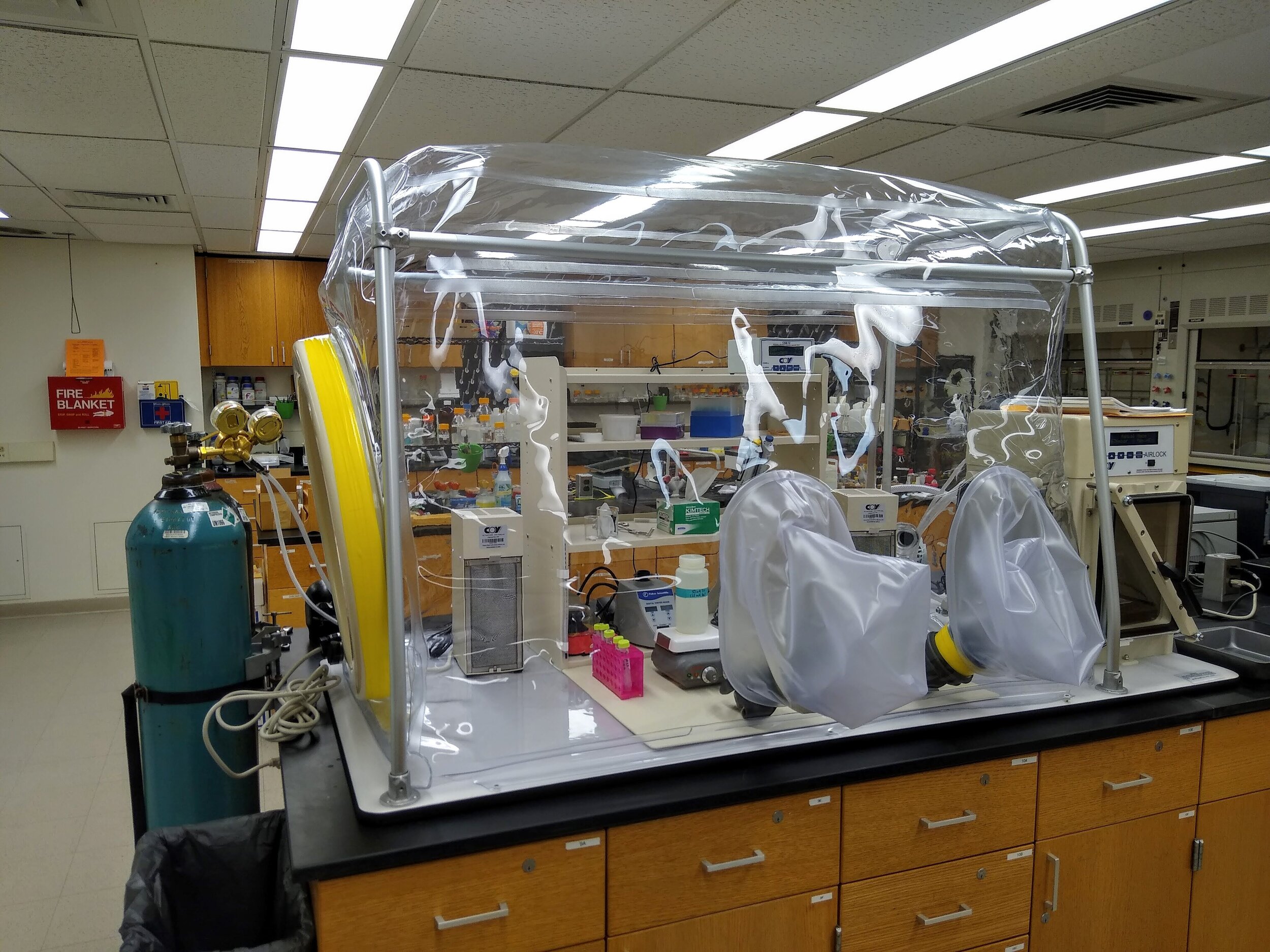Resources in the Ekanger laboratory
Anaerobic Chamber, Type A (Coy Laboratories)
Enables experiments with oxygen-sensitive complexes and proteins and the preparation of anaerobic samples for instruments including the Bruker EPR spectrometer.
Bruker EMX Plus electron paramagnetic resonance (EPR) spectrometer
Our group routinely uses EPR spectroscopy to study paramagnetic metal centers and organic radicals using samples prepared under anaerobic conditions.
Useful internet resources
Google Scholar
It’s Google, but for searching scholarly journal articles. This is a quick way to find papers or references. Looking for specific substances or reactions is better suited for SciFinder.
WebMO@TCNJ
This is a front end interface to access computational chemistry software, such as Gaussian16, which is installed on the TCNJ Electronic Laboratory for Science and Analysis (ELSA) high performance computing cluster. Ekanger laboratory researchers can access job archives containing pre-built, geometry optimized complexes.
SciFinder
A powerful platform for finding references and accessing journal articles. You can perform in-depth searches for references, substances, and reactions.
ChemTube3D
“ChemTube3D contains interactive 3D chemistry animations and structures, with supporting information, for students studying some of the most important topics in advanced school chemistry and university chemistry courses. Use the menus to explore them.”
Symmetry@Otterbein
“Welcome to the world of symmetry! The resources contained within this web site are designed to help students learn concepts of molecular symmetry and to help faculty teach concepts of molecular symmetry.”
ChemRxiv
“ChemRxiv (pronounced 'chem-archive') is a free submission, distribution and archive service for unpublished preprints in chemistry and related areas.
Use ChemRxiv to:
Gather feedback and context from fellow scientists
Rapidly disseminate work to a wide audience
Establish the priority and precedence of a discovery
Boost the visibility of research findings
Find potential collaborators and hold interdisciplinary discussions
Document research results for grant reviewers in advance of publication
Facilitate rapid evaluation of results
Spot trends and encourage a broad range of constructive feedback

